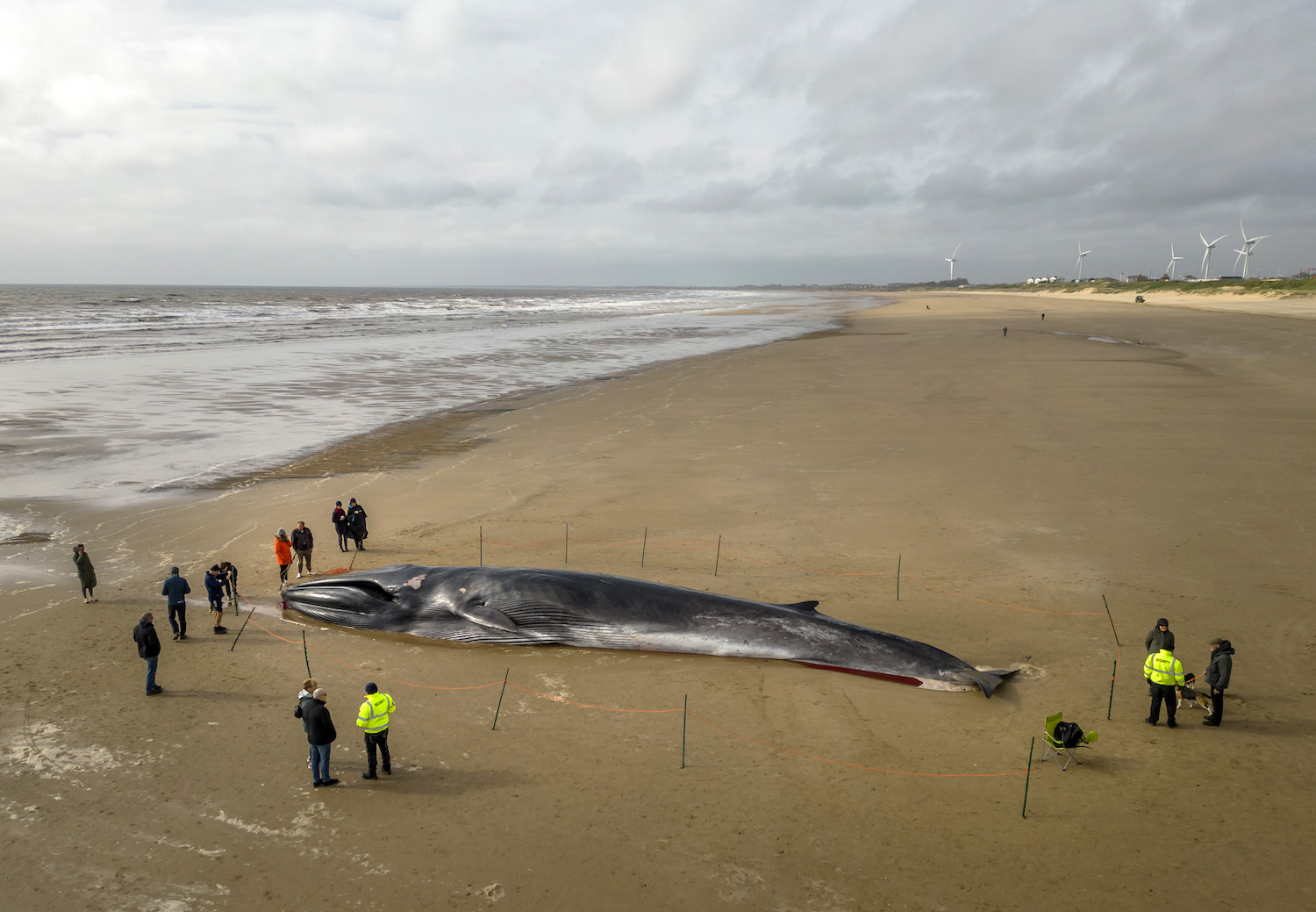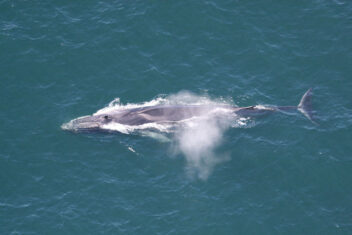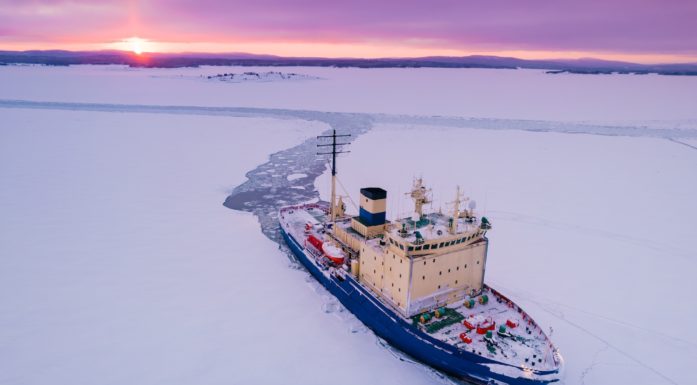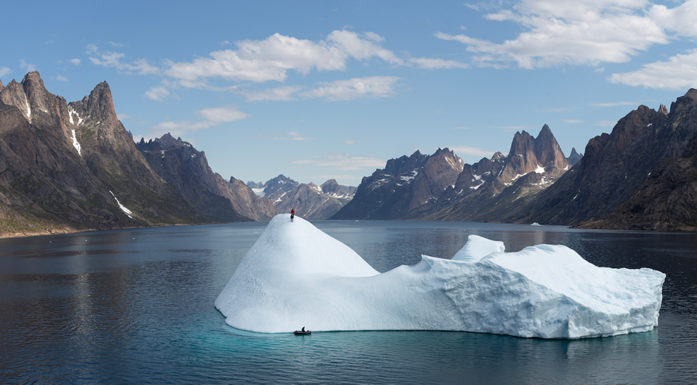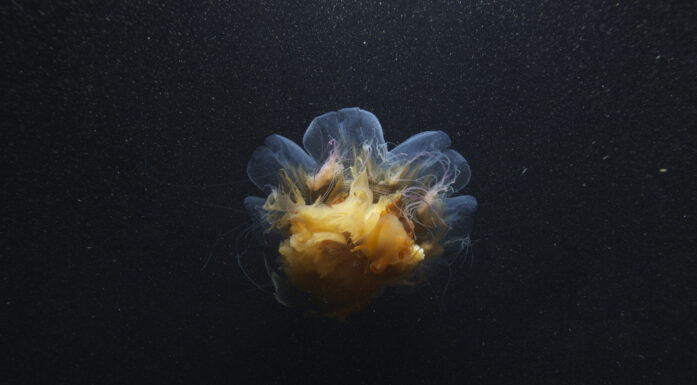Tracking whales as they cruise the Arctic
For the first time ever, researchers have been able to track eight fin whales in near real time for five hours, as they swam along a stretch of fibre-optic cable line in the Arctic. The breakthrough suggests that fibre-optic cable networks could be harnessed to help prevent whale deaths by ship strikes.
Fibre-optic cables line the coasts of the continents and criss-cross the oceans, carrying signals that are the backbone of communication in the modern world. While their main job is telecommunications, researchers have been exploring ways to use this giant network to eavesdrop on everything from storms to earthquakes to whales.
Now, working with two nearly parallel fibre-optic telecommunications cables off the Norwegian arctic archipelago of Svalbard, researchers have been able to estimate the positions and tracks of eight fin whales along a section of the cable — for five hours.
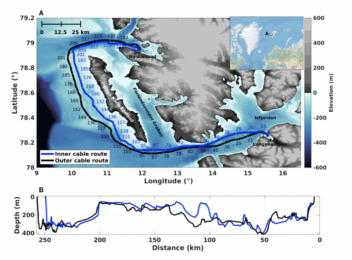
This map shows the location of the fibre optic cables, which extend from Longyearbyen, the main settlement on Svalbard, which is in the lower right of the map, to Ny-Ålesund, a small research outpost to the northwest of Longyearbyen. Graphic: Rørstadbotnen et al. 2023.2023. Front. Mar. Sci. 10:1130898.
“This work demonstrates how we were able to simultaneously locate and follow these whales over an 1800 km2 area — with relatively low infrastructure investment,” said Martin Landrø, head of NTNU’s Centre for Geophysical Forecasting and one of the members of the team that did the work.
Transforming fibre cables into hydrophones
The system the researchers used for this work is called Distributed Acoustic Sensing, or DAS. DAS uses an instrument called an interrogator to send laser pulses into a fibre-optic system and records the returning light pulses, essentially turning the cables into a series of hydrophones.
Landrø and his colleagues first began to explore the ability of DAS to record underwater vibrations and sounds in the waters off Svalbard in June 2020, during the height of the Covid-19 pandemic. At that time, they collected 40 days of recordings and roughly 250 terabytes of data. From these data, researchers were able to identify more than 800 whale songs and calls.
The researchers have built on this early work to expand their ability to identify different whale species and to conduct real time recording from the fibre optic cables in Svalbard.
For this latest effort, published in Frontiers of Marine Science, the researchers had access to two, nearly parallel 250 km long fibre-optic cables that extend from Longyearbyen, the main settlement in Svalbard, to Ny-Ålesund, a research outpost to the northwest. The paired cables allowed the researchers to localize the whales with an accuracy of roughly 100 metres, within an area of roughly 1800 km2.

This graphic is a closeup from the map above, showing how researchers were able to simultaneously tracking multiple whales using fiber-optic cables in the Arctic. The maps shows an overview of a 60 km long section of the cables, showing the positions and tracks of up to eight acoustically-detected whales, colour-coded from dark to light over a 5.1-hour period. Graphic: Røstadbothnen et al. 2023. Front. Mar. Sci. 10:1130898.
“This shows that the two fibre cables are a very effective means of monitoring whales in the Arctic,” Landrø said.
A melting Arctic
As a Norwegian territory in the high arctic, Svalbard offers Landrø and other researchers an important base from which to study this changing ecosystem.
Recent research predicts that the Arctic could be ice free in the summer as early as 2035, which could increase shipping and cruise ship traffic across the top of the globe.
As one small example, as many as 35 cruise ships and additional smaller expedition ships are expected to transport up to 75,000 people to Longyearbyen and surroundings in 2023, according to Visit Svalbard.
Could reduce ship strike risk
Whales are already changing the way they use the Arctic and Antarctic as feeding grounds, with some research showing that fin whales have begun spending time year-round in Arctic regions. That means increased ship traffic in these areas can also increase the likelihood of ship strikes. The use of the existing fibre-optic cable network and DAS could help reduce this possibility, the researchers said.
“The capabilities demonstrated here establish the potential for a near-real-time whale tracking capability that could be applied anywhere in the world where there are whales and fiber-optic cables,” the researchers wrote. “Coupled with ship detection, using a similar approach ….a real-time collision avoidance system could be developed to reduce ship strikes.”
The audio file below is the sound of one of the fin whales recorded by researchers from the inner cable. The frequency of the sound has been scaled up so that it is audible to the human ear:
This development comes at a time when NORDUnet, the Nordic Gateway for Research and Innovation and the Nordic NRENs have begun a number of initiatives to investigate and plan the first submarine fibre-optic cable system between Europe, Asia, and North America to secure a shorter route through the Arctic Ocean. The effort is called Polar Connect.
If such an initiative is realized, “it would open far greater areas for us to follow whale movements in the Arctic,” Landrø said.
Reference:
Rørstadbotnen RA, Eidsvik J, Bouffaut L, Landrø M, Potter J, Taweesintananon K, Johansen S, Storevik F, Jacobsen J, Schjelderup O, Wienecke S, Johansen TA, Ruud BO, Wuestefeld A and Oye V (2023) Simultaneous tracking of multiple whales using two fiber-optic cables in the Arctic. Front. Mar. Sci. 10:1130898. DOI=10.3389/fmars.2023.1130898
